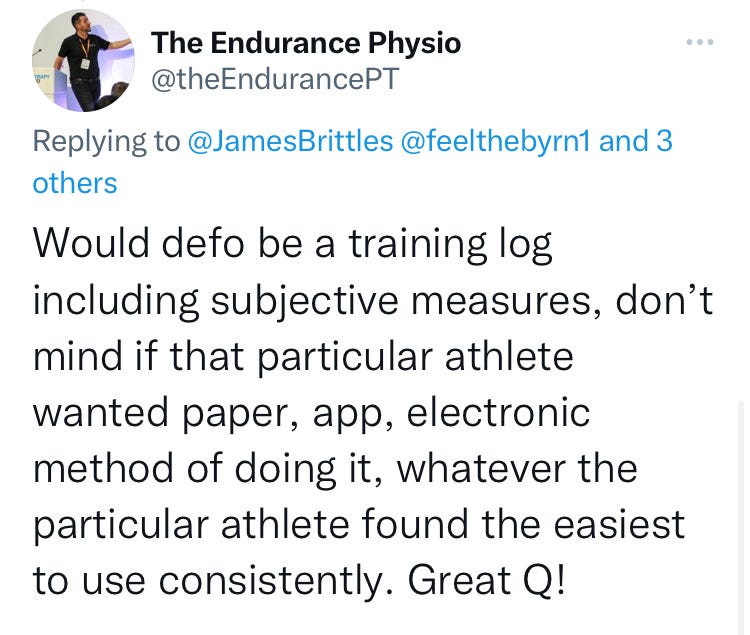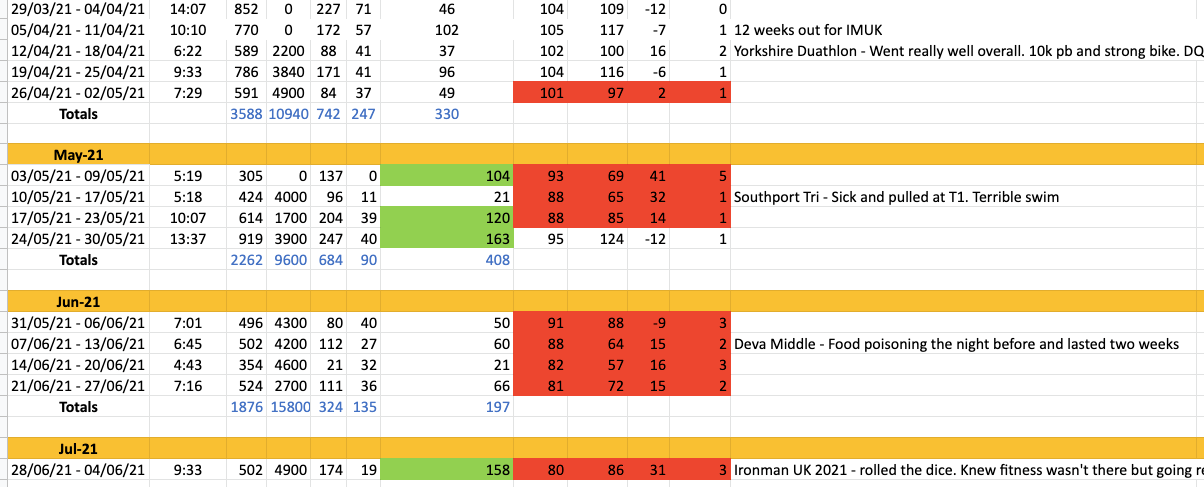I am going to share some of the biggest errors that I made in 2021 and how logging data could have prevented this from happening. In my previous article Self Coached Athlete Toolkit I highlighted different tools to support self coached athletes. One of those tools was simple, effective and cost £0.
One of the biggest challenges faced by self coached athletes is being honest with yourself and exposing your blindspots. The simple and quick fix for this is to hire a coach, however, not everybody can afford this luxury. Data collection comes in all different forms Strava, Training Peaks, Garmin Connect etc, it is what you do with that data that makes it relevant.
3 Biggest Mistake I made from not paying attention to data
- Overtraining / Poor Recovery
- Playing Catch Up
- Racing when Not ready
These mistakes were costly to performance and health both physical and mental. I had the data to hand, however, I never had the data presented in a way that would put red flags into the ground and force me to pull my head out of the sand.
Apps I was using:
Training Peaks Premium
Strava
Garmin Connect
The downside to flipping between apps is that you have to work hard to extract the key data that you need to inform planning and monitor progress or lack of in this case.
Mistake 1: Overtraining / Under Recovering
After a lifetime best performance across an early season standard distance duathlon, I never followed it up with lifetime best recovery. I’d gone deep in that race and performed over expectation with a 10K PB and solid bike performance (minus the DQ).
Instead, the following week, I ramped the training up even more but with equal or more intensity. The following weeks looked like this.
Less Training Hours
Training Peaks Numbers Trending Down
Illness & DNF First Tri of the Season
Learnings:
Follow up life time best performances with life time best recovery
Increase the amount of rest and drop the intensity until the body tells you it’s ready
If numbers and hours drop for two consecutive weeks, stop there is something not right
Use HRV to help inform readiness
Mistake 2: Playing Catch Up
The next few weeks was no better. Instead of trying to get the body right, I decided to play catch up and try to make up for lost time, a DNF and also to try and get fit for a Middle Distance Triathlon.
Instead, of getting fitter and being in a position to race as I’d hoped for (not planned for) the exact opposite happened, which is common sense, but without a coach overseeing my training my head was firmly buried in the sand at this point.
Learnings:
Do not play catch up, it’s that simple. Restart and find some base level fitness
Allow the body to fully recover from whatever has prevented it from training before starting or advancing training
Don’t book any races in desperation of correcting a previous performance it dosen’t work and only adds more pressure to you
Food poisoning the night before a race is never welcome, although it save me getting my arse handed to me by not being fit enough
Mistake 3: Racing Unfit
The final nail in the coffin. A DNF at Ironman UK, a race that I had waited since 2018 to compete in again and it was brought to an end by Hyperthermia, however, in truth my fitness level would have just scraped me a finish that I wouldn’t have been proud of.
Less than 10 hours per week of training during the most important part of the training programme
1 long ride in 12 weeks
Fitness (CTL) dropped from 101 to 80 prior to racing
Form and Fatigue planting the red flags that got ignored
Learnings:
Not being honest about your current level of fitness is a quick fire way to fail
Not respecting the race demands is another quick way to fail and a deferral should have been put in place by the end of May
If you are not a coached athlete, create a visual of your training data that you can relate to
This spreadsheet was set up in 2022 and 2021 data was put in retrospectively this level of accountability would have forced me to make the tough decisions
Make Data Work For You!
By compiling my Training Peaks and Strava data across in to a simple excel spreadsheet has helped me improve over the last year or two. It holds you to account, it highlights areas of improvements and also informs future training blocks depending on the races you have coming. Whatever platform you use to record data make sure the data works for you and not against you.
I would be more than happy to share this Excel template with any of my subscribers. If you would it please just leave me a comment below and start tracking the things that matter most to you.







Jay - I’d love a copy of the spreadsheet!